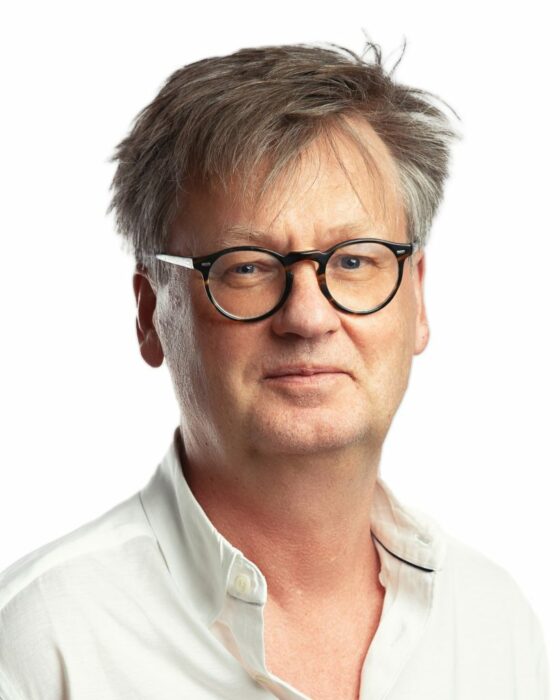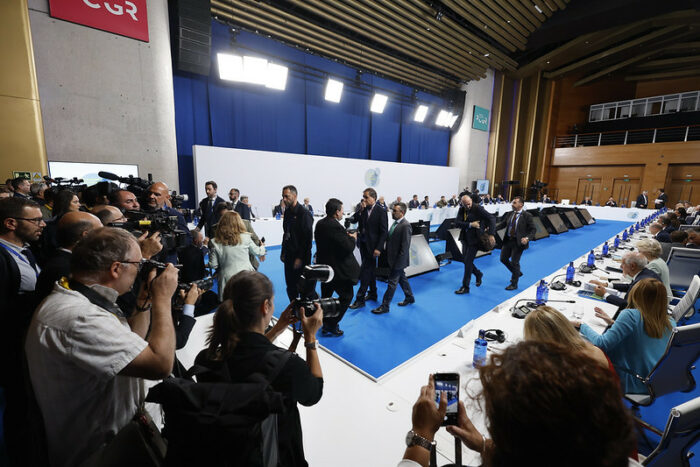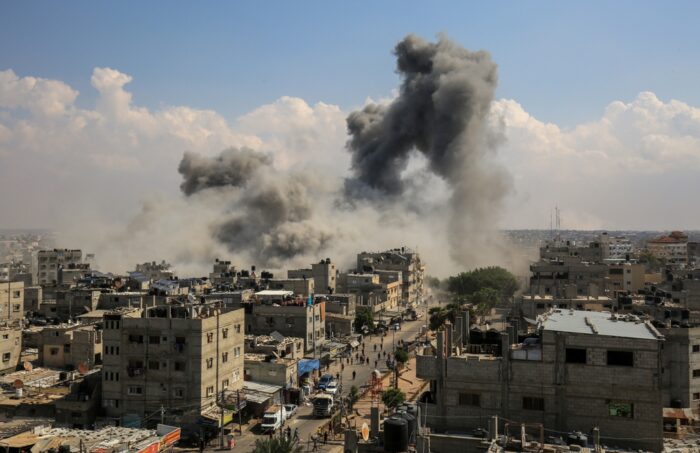The Progressive Post
The Scandinavian defence repositioning

After Russia invaded Ukraine, the security map of northern Europe was redrawn. Within the space of two months, Sweden and Finland have jointly decided to apply for NATO membership, thereby abandoning their previous longstanding security doctrine of military neutrality.
However, the applications for NATO membership do not fall from the blue sky. In recent years, Sweden and Finland’s ties to NATO have been progressively strengthened and cooperation with the Atlantic Pact amplified. At the same time, the bilateral military cooperation between Sweden and Finland has developed apace. Consequently, the step into NATO is not that immense, and neither is it a surprise that Sweden and Finland take it together.
But NATO membership was not on the agenda in either country before President Vladimir Putin ordered the invasion of Ukraine. Admittedly, certain parties and players had supported alignment with NATO in recent years, but the topic only received traction due to Russia’s current increasing repression and escalating external aggression.
After the fall of the Soviet Union, in keeping with many other European countries, Sweden carried out substantial disarmament, not to say demilitarisation. However, in recent years, the deteriorating security situation in surrounding countries has resulted in increases in military spending. After the outbreak of the war, Sweden has decided to increase defence spending to 2 per cent of GNP, matching, for example, Germany and Denmark. In contrast, Finland has maintained a greater defence capacity after 1989, presumably because of the country’s historical experience with its eastern neighbour.
Sweden’s and Finland’s NATO applications for membership in NATO are due to the uncertainty caused by Russia’s actions. Russia is now challenging the whole security system which was established after 1989. It has also shown that it is prepared to wage brutal warfare to achieve its aims. The Baltic Sea is a region of substantial strategic geopolitical importance. Russian violations of Swedish airspace have for some time been a disturbing indication and demonstration of power. And the new normal has reached an increased level of unpredictability since 24 February 2022.
It was Finland which was first to apply for NATO membership. This is mainly because of the country’s geopolitical situation: it has a long border with Russia and a bitter historical experience of war with the Soviet Union; notably the Winter War 1939-40 and the Continuation War 1941-44, which forced Finland to cede substantial parts of its territory and to sign a ‘Peace and Friendship Pact’ in 1948 which imposed severe restrictions to the country’s room of manoeuvre – not least in the fields of foreign and security policy. The pact created a framework which circumscribed the country’s freedom to act until 1989 when these restrictions were jettisoned.
While Finland’s decision to join NATO was made swiftly soon after the outbreak of the war, for Sweden, it took a little longer to make the decision. Sweden had remained neutral and enjoyed peace for over 200 years. During the corona crisis, critics of the Swedish pandemic strategy maintained that Sweden was ‘peace-damaged’.
At the outbreak of the war, all parties on the right of the Swedish political spectrum came out in favour of joining NATO. When the Social Democrats followed suit, the matter was settled. It was not an easy step for the Swedish labour movement to take. Neutrality has, as they say, “served Sweden well”. Historically, neutrality has enjoyed a broad consensus in Swedish politics. However, over the past years, it has primarily become a doctrine associated with Social Democracy. It has also been linked to the opposition to nuclear weapons – while now Sweden is applying to join a NATO which has such weapons in its armoury. Moreover, neutrality also reflected the image of Sweden as a country able to act independently between the political blocs during the Cold War and which very early already had declared support for the processes of national liberation from colonial powers in the Global South. It is a tradition which has become associated with Olof Palme. All these are essential elements of the identity and pride of Swedish Social Democrats. However, Russia’s aggression and Finland’s unequivocal and prompt ‘yes’ prompted them to support NATO-membership nevertheless.
Sweden’s and Finland’s joint position on NATO is logical. Together, both countries have provided security and a neutral axis in northern Europe since the end of World War II. The idea of forming a Nordic defence alliance, which was particularly popular among Swedish Social Democrats, was abandoned when Denmark and Norway signed the North Atlantic Treaty establishing NATO in 1949.
As a consequence of the war with Russia in 1808-09, Sweden was forced to cede Finland to Russia, and it remained part of the Russian Empire until 1917. Karl Johan XIV, the Swedish king, imported from France in 1818, declared that in the future, Sweden renounced any claim to and would not seek to reconquer Finland. This doctrine laid the foundation for the Swedish policy of neutrality which has prevailed until the present. And it secured peace for Sweden. Finland has a Swedish speaking minority and is constitutionally bilingual. Many Finns have immigrated to Sweden and are recognised a national minority in Sweden. The links between the two countries are extremely close: every new Swedish prime minister makes their first foreign visit to Helsinki.
Cooperation between the Nordic countries has long been well developed. As early as the 1950s, there was a common labour market, and passports were not required for Nordic citizens travelling between the Nordic countries – well before the EU and Schengen. On the other hand, a more far-reaching political and defence cooperation remained undeveloped. Now, however, as a result of Sweden and Finland’s bid to join NATO, the Nordic countries will be part of the same defensive alliance.
Denmark, one of the founding NATO members, had refused to take part in the EU defence alliance until a recent referendum (1 June 2022), where a majority of Danes voted to enter this part of EU cooperation. With this decision, the Nordic countries are more in step with each other than ever before concerning EU as well as NATO. The final piece of the puzzle is Norway, which is closely linked to the EU through its membership of the European Economic Area (EEA), but which has refused full EU membership in two referenda (1972 and 1994). But perhaps the possibility that, in the future, Norway will reappraise its standpoint is not to be excluded. The brutal and terrifying developments in Europe have shown that crises and war can necessitate reappraisals which, only a short time before, would have seemed unthinkable. This is precisely what has happened this spring in Scandinavia: in Sweden, Finland, as well as Denmark.
Photo credits: klenger/ Shutterstock.com




